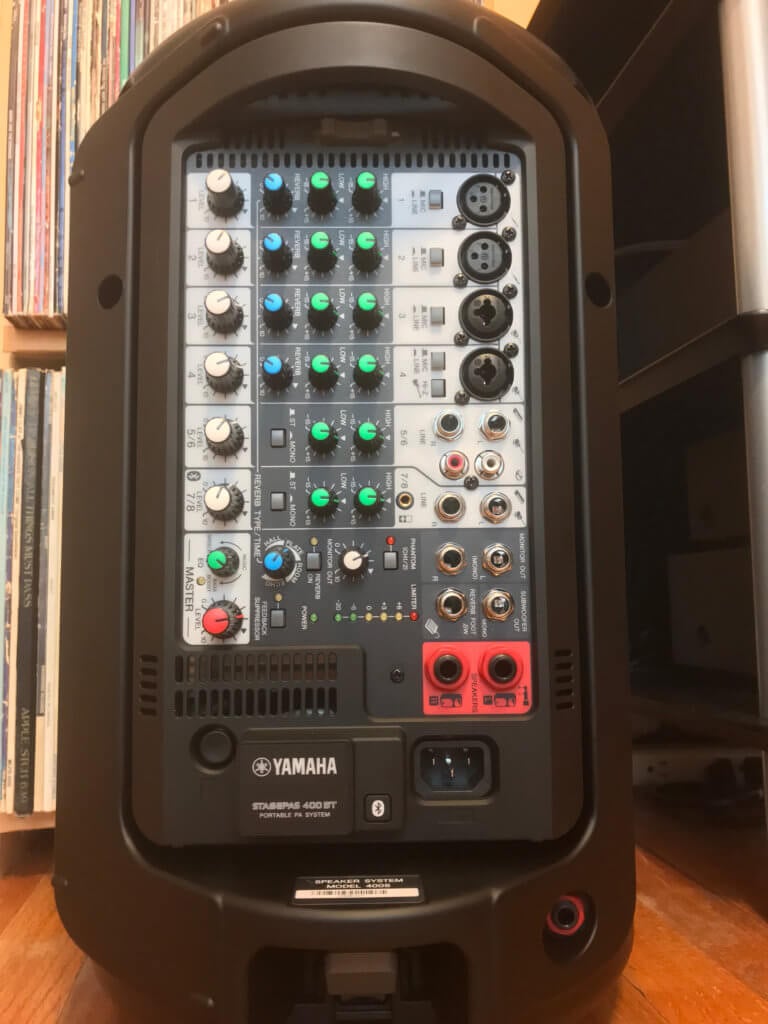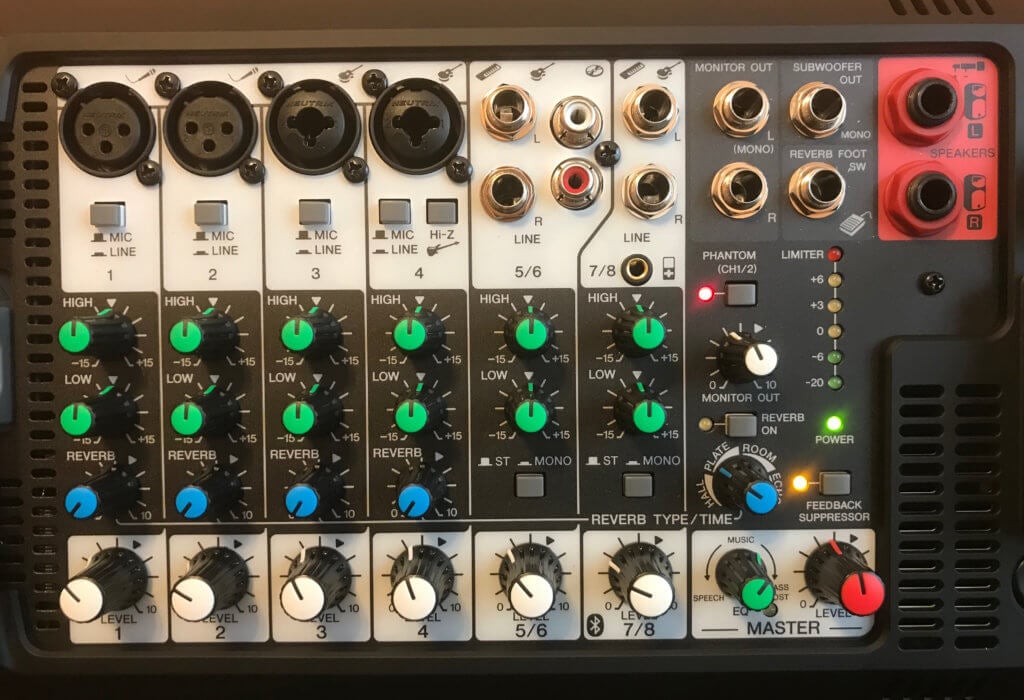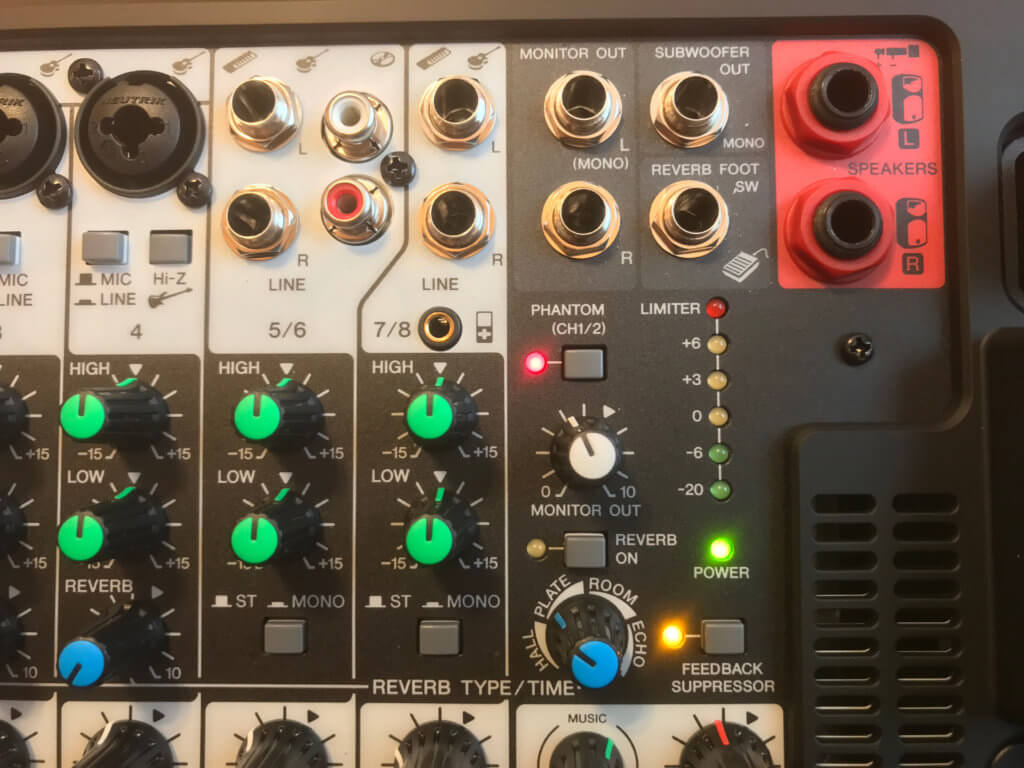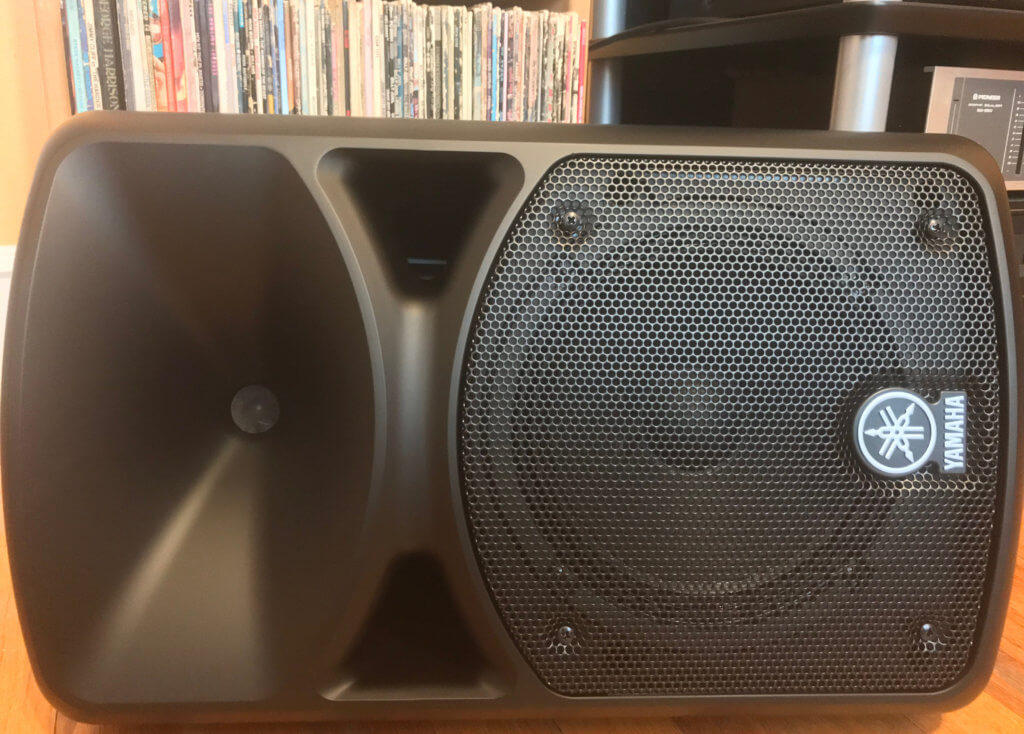Welcome to the first in a four-part series that will provide real-world advice about portable PA systems, co-presented by Yamaha and Performer Magazine. In this installment, we’ll take a closer look at what makes up a portable PA system, what makes the best portable PA system for your band, and what features of a portable PA system are most important when choosing the best model for your needs. Yamaha has been kind enough to loan us a number of products from their professional audio range, which we’ll be incorporating into our series as we go – including the new STAGEPAS 400BT, a powerful portable PA system with Bluetooth, and its sister units the STAGEPAS 400i and STAGEPAS 600i. Let’s begin by looking at the basics of portable PA systems and some of the features to look for.
WHY CHOOSE A PORTABLE PA SYSTEM?
The big question for most bands is: “Do I need to purchase my own PA system?” In our opinion, especially in today’s DIY climate, the answer is absolutely yes. While most traditional live music venues will have their own house sound systems, we find that more and more solo artists and bands are playing an increasing amount of non-traditional venues, such as fairs, street performances, coffee houses, house concerts, private and corporate events, and many other live gigs where a full PA system and sound engineer are not typically provided.
So, in those instances, having your own PA system, and more importantly, a PORTABLE system that can be loaded in, set up and torn down quickly, is a must-have. In most instances, a portable PA system consists of a compact mixer and two PA speakers that are designed to work together as a cohesive unit. Most of the time, they are built in such a way that they either fit together when not in use for easy carrying, or into a custom-built case/enclosure that also aids in easy travel. So, what sorts of features should you pay attention to when searching for the best portable PA system for yourself or your band? Let’s start with the “portable” aspect of these products…
SIZE, WEIGHT, AND TRUE PORTABILITY
A true “portable” PA system should be lightweight and offer a compact mixer and speakers that are engineered to work together. The beauty of today’s portable PA system is that not only have they been designed to work as a cohesive sound system, but neat design tricks have been employed to make them truly portable, which used to be code for, “Hey, it fits in a van, so we can get away with calling it ‘portable.’”

The compact mixer from the STAGEPAS 400BT portable PA system ingeniously fits into the back of one of the speakers.
Take the STAGEPAS 400i, which we’ve tested in the past, for example. The entire configuration, including the mixer and two speakers, can easily fit in the trunk of a compact car, or the front seat of a sedan. Now, that’s portable. Furthermore, the entire setup weighs under 40lbs total, meaning loading in and out of a gig is a breeze. It also only requires one person to move the entire setup, mixer and speakers, into and out of a venue, which is great if you don’t have a road crew assisting for smaller gigs. And finally, the design team at Yamaha has cleverly devised a way to fit the mixer into the speaker enclosure for ultimate portability. Set up, even for a novice who’s never had to put together a PA before, takes under two minutes in our tests.
POWER AMPLIFIER
So, you want a portable PA system that’s truly portable. Check. Next up, we should talk about power. Conventional wisdom would dictate that the more watts, the louder the system. And while that’s technically true, doubling the wattage of a PA system, for example, doesn’t simply double the volume level, or decibel output.
And while that’s a more complicated topic for another day, increasing the power of the amplifier section of your portable PA system will have one key feature that you’ll be able to benefit from right away, and that’s clean headroom. The more power your system can produce (for example, the STAGEPAS 600i has a max output power at 4 ohms of 680 watts, 340 coming from both left and right channels), the cleaner the sound will be when pushed at higher volume levels. And for gigs with big crowds where you need to max out the volume, you’ll be thankful you spent the extra dollars when your band’s not clipping or distorting during your set. There’s nothing that leaves a worse impression with a crowd than an act with lousy sound.
MIC INPUTS, PHANTOM POWER AND HI-Z
For solo artists and singer/songwriters, the number of inputs might not be such a big deal. But if you start playing with an accompanist (say, for wedding gigs), or expand to a full band down the line, you’ll want a portable PA system that offers flexibility. And that doesn’t just mean more XLR mic inputs, it also means more kinds of inputs. Picking a portable PA that features a mixer with just the right number of mic inputs for your current situation might be limiting down the line. So, look for additional features that could come in handy, depending on the types of shows you’ll be playing (and setting up sound for), in the future.

The compact mixer from the STAGEPAS 400BT portable PA system
You may only have a handful of dynamic mics now, but you could expand your live rig to include some nice condenser mics down the road. And in that case, choosing a portable PA system because it’s cheap, may come back to haunt you. Make sure you have phantom power (usually indicated by a +48v label) on board to be able to handle these types of mics now and in the future. Also, be sure the systems you’re looking at have hi-z inputs or switches, that will allow you to connect instruments with passive pickups (acoustic guitars, electric guitars, basses) without the need for an extra DI box in the chain. Sometimes going direct through the PA makes more sense for an application than hauling additional amps and mics (especially for small, non-traditional spaces where space is at a premium). Thankfully, the STAGEPAS lineup features at least 8+ channels in its mixer, phantom power and hi-z switching for direct needs.
ON-BOARD FX
Depending on your needs, built-in effects may or may not be crucial to your portable PA checklist, but we’ve found through our own testing that the digital effects being included in today’s mixers blow away those included just a few short years ago. In other words, if you’ve dismissed on-board effects in the past, it might be time to re-evaluate. Again, if you’re going with a portable PA, it means you’re in charge of your own sound for the evening, so having a touch of reverb at your fingertips (or via footswitch like with the STAGEPAS lineup) can be a handy tool for giving your sound a little extra life.
Another nice touch that we’ve found with the STAGEPAS lineup (and sometimes on more high-end units) is feedback suppression. This is accessed via a simple pushbutton on STAGEPAS models, and in our tests virtually eliminated all unwanted (and clichéd) feedback on our test stage. Another excellent feature to put on your checklist when it comes time to make a purchase decision.

Reverb, phantom power and feedback suppression included in the STAGEPAS 400BT portable PA system
BLUETOOTH CONNECTIVITY
Bluetooth connectivity might not sound like a necessity either, depending on your current setup. But more and more manufacturers are adding Bluetooth capabilities to their portable PA lineups.
It enables solo artists, for example, to wirelessly stream backing tracks from their smartphones or tablets without the need to take up another line input on the mixer. You can also stream music between sets through the PA while on break.
SPEAKERS AND OUTPUTS
Of course, a portable PA system isn’t worth a darn if the included speakers aren’t high quality. Now while that goes without saying (yeah, we said it anyway), one thing a lot of bands and artists overlook in the speaker department is “throw” and coverage. Basically, these terms refer to how far the sound will carry and in what direction, and how much of the crowd (or what angle of coverage) will be taken care of by both the left and right speakers working in tandem. Look for the widest coverage and throw you can, as this will ensure that the entire audience is hearing your set, and not just those lucky enough to be directly in front of the speakers.
Another aspect of portable PAs that often goes overlooked is additional outputs (not just speaker mains). Having extra outs on your mixer will enable you to have the flexibility of an installed PA system, like you’d find at a traditional rock club. This means adding floor monitors and potentially subwoofers to expand the capabilities of your system, if you have the space and your needs require these for the type of gig you’re playing. What’s cool about the STAGEPAS 400BT we’ve been using is that adding a powered sub automatically assigns a high-pass filter to the STAGEPAS speakers without any additional futzing around.

Speakers from the STAGEPAS 400BT system can be pole mounted or used as wedge monitors.
And lastly, if you’re able to shop in-store as opposed to online, really take a good look at the enclosures and speaker grilles before you buy. The STAGEPAS systems are really rugged and can take a fair amount of abuse while on the road (we’ve lugged ours around town in the back of cars and SUVs and they’ve held up perfectly to all the bumps and potholes a New England winter can throw at them).
CLOSING THOUGHTS
Now, keep in mind these are the basics you’ll need to get started when choosing the best portable PA system for your band. Head to https://usa.yamaha.com/products/proaudio/index.html to learn more and to find the portable PA products and accessories that will fit YOUR band’s needs.
Stay tuned for upcoming parts of the series that will focus further on setting up a portable PA for your next gig, mixing house concerts and non-traditional venues, and pro tips for mixing vocals with singer/songwriters. Until then, be sure to check out the entire range of Yamaha Professional sound products here and follow Yamaha Music USA on Facebook and Twitter.
DON’T MISS PART TWO: “How to Set up a Portable PA System”
and
